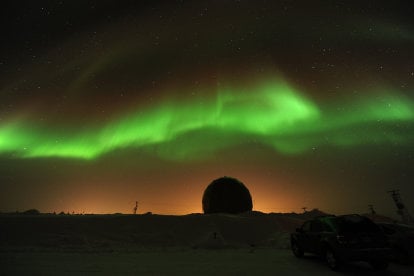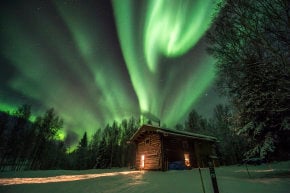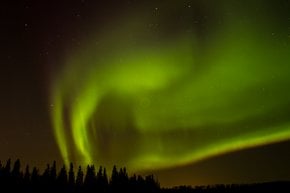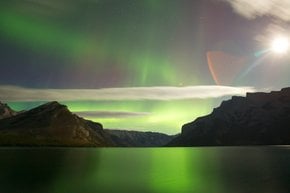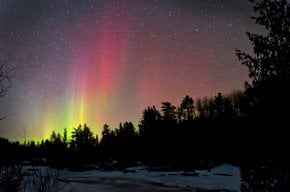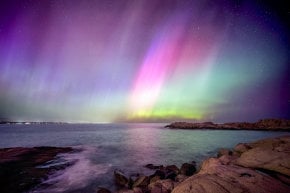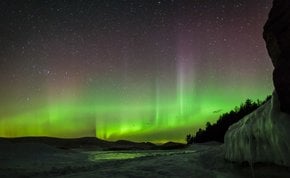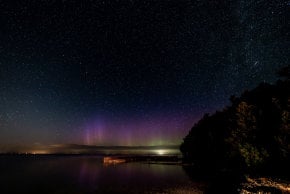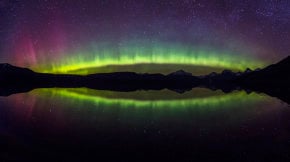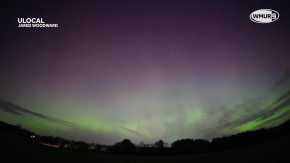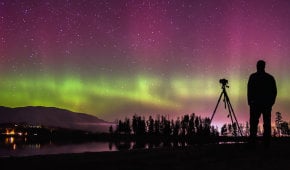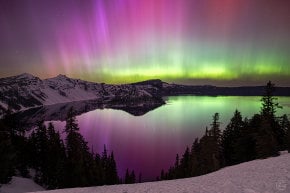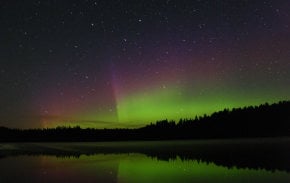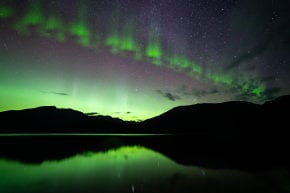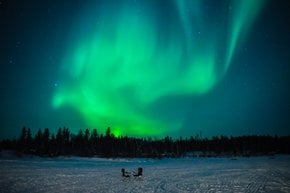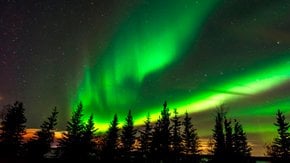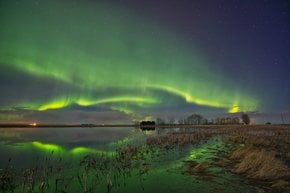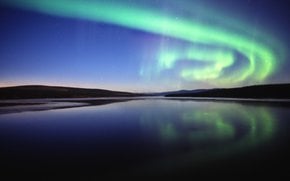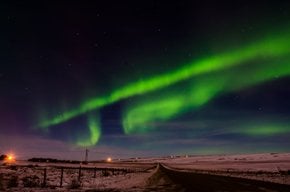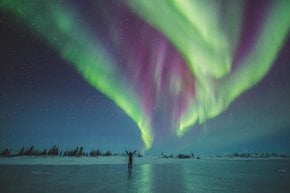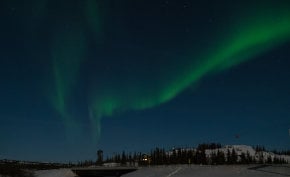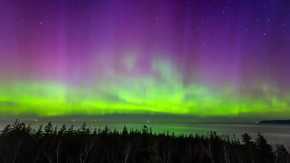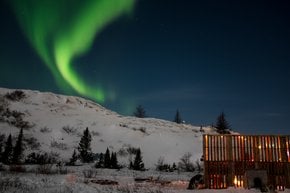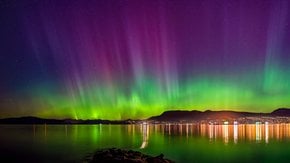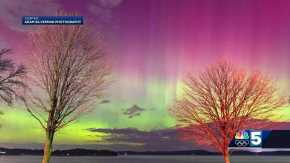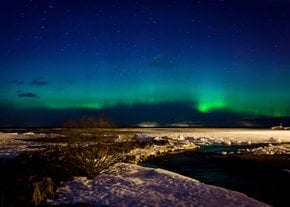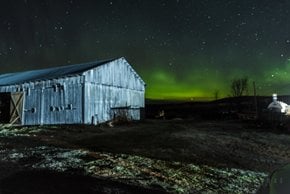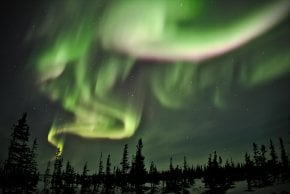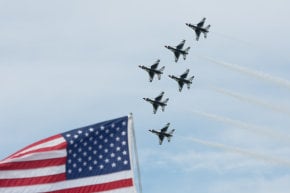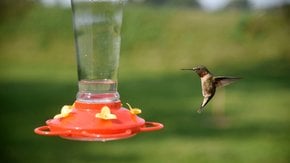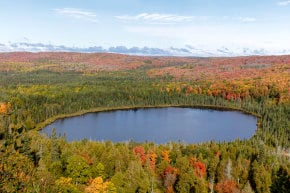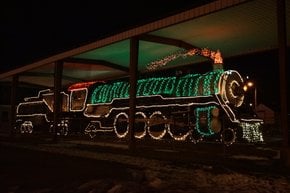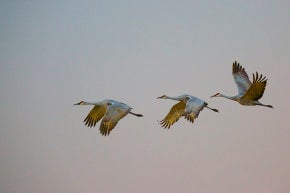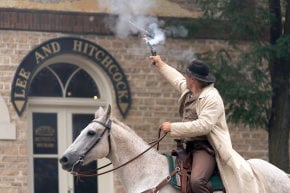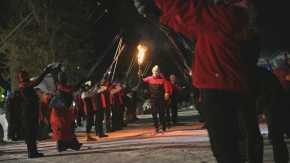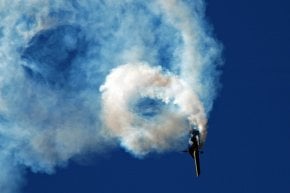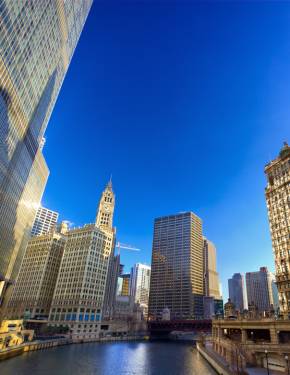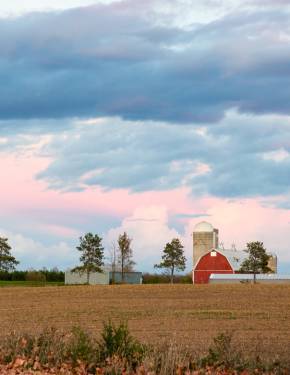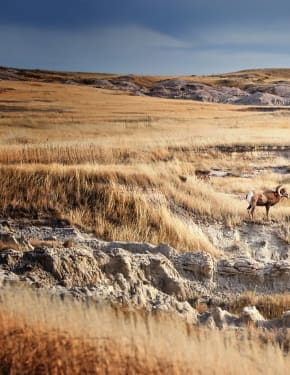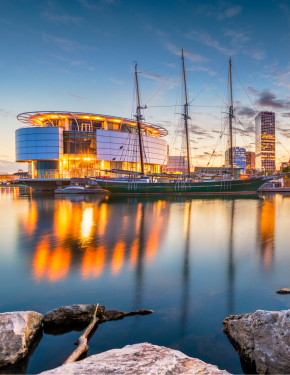Northern Lights in Minnesota 2025-2026
Minnesota’s location makes it one of the best states to view aurora borealis
Best time: September–February
The Northern Lights, or Aurora Borealis, are a captivating natural phenomenon that illuminates the night sky with vibrant colors. When you see northern lights face to face—flashing, weaving, and pulsing across the starry sky—it feels like pure magic. The night is lighted up with a river of greens, purples, and reds. It seems like the whole universe is waving hello! In Minnesota, several prime locations offer exceptional opportunities to witness this magical display.
Best Locations to See the Northern Lights
Voyageurs National Park
Voyageurs National Park is a certified International Dark Sky Park, providing extensive views of unpolluted night skies. Visitors can enjoy the northern lights from several vantage points, such as the Rainy Lake Visitor Center upper parking lot and the Meadwood Road Day Use Area. The park's waterways offer additional opportunities for uninterrupted sky viewing.
Boundary Waters Canoe Area Wilderness
Known as a Dark Sky Sanctuary, the Boundary Waters Canoe Area Wilderness spans 150 miles along the U.S.-Canada border. Accessible primarily by canoe, this area boasts over 1,100 lakes, offering exceptional night sky views. Expect to see the aurora borealis after a day of paddling and exploring.
Cook County
There's no reason to travel to the Arctic Circle to see Aurora Borealis. Thanks to its northern location and dark skies, Cook County is blessed enough to host this miracle. Admire the Milky Way shining and northern lights along the Gunflint Trail and over Lake Superior. Best viewing spots include White Sky Rock, Artist Point, Hawk Ridge, and Little Stone Lake. Just keep away from light pollution and be careful while hiking in the dark.
Lake of the Woods and the Northwest Angle
Lake of the Woods and the Northwest Angle are the locations, where you will find a panoramic view of the forests and waters by day and, sometimes, the northern lights by night. The Northwest Angle is deemed the northernmost point in the continental states, which is separated from the rest of Minnesota by Lake of the Woods. Keep in mind that to get to this beautiful spot, you will have to drive through Canada for about 40 miles.
Silver Bay
Silver Bay, located on the North Shore of Lake Superior, offers several excellent locations for viewing the northern lights. The rugged shoreline and numerous parks in the area provide ample opportunities for both casual observers and avid photographers.
Ely
Ely, a gateway to the Boundary Waters, is another great spot to witness the aurora borealis. The city's remote location and dark skies make it ideal for stargazing. Popular viewing spots include Shagawa Lake and the Kawishiwi Falls Trail.
Jay Cooke State Park
Jay Cooke State Park, located near Duluth, offers scenic views of the night sky from its numerous hiking trails and campgrounds. The park's Swinging Bridge provides a unique vantage point for observing the northern lights over the St. Louis River.
Best places to see northern lights outside of Northern Minnesota
There are also remote and urban locations in Minnesota that provide a perfect stargazing environment. Mid- and southern parts of Minnesota, such as Lake City, Park Rapids, Mankato, St. Cloud, Rochester, and Stillwater are known for hosting an occasional northern light show. They also boast constellations on any clear night.
Viewing Conditions and Forecast
The best time to view the Northern Lights in Minnesota is during the long, starry nights from September to February. However, sightings can occur year-round. The intensity and visibility depend on solar activity, which can be tracked using space weather forecasts. For current Aurora forecasts, visit the NOAA Space Weather Prediction Center website or the Geophysical Institute Aurora Forecast website.
Hours and Admission
Most Northern Lights viewing locations in Minnesota are accessible 24/7. There are no entrance fees for natural viewing sites like parks and wilderness areas, but some specific facilities might charge for parking or entry. For example, Voyageurs National Park may have parking fees and fees for certain programs or guided tours offered by the visitor centers. Jay Cooke State Park requires a daily vehicle permit fee of approximately $7 or an annual permit for around $35, with additional fees for overnight camping. Split Rock Lighthouse charges an entrance fee of around $10-12 for tours and access to the lighthouse grounds, with discounts for children and seniors. Tettegouche State Park also charges a daily vehicle permit fee of around $7 or an annual permit for approximately $35, along with camping fees. The Boundary Waters Canoe Area Wilderness (BWCAW) requires a permit for entry, especially for overnight trips, with fees starting at around $16 per adult for a reserved permit. Gooseberry Falls State Park requires a daily vehicle permit fee of around $7 or an annual permit for $35, and some parking areas might have specific charges.
Additional Points of Interest
Located along the North Shore, Split Rock Lighthouse offers historical tours and scenic views of Lake Superior. The area is also a good spot for night sky photography. Tettegouche State Park features stunning waterfalls, rugged cliffs, and scenic trails. The park's Palisade Head provides a high vantage point for viewing the northern lights over Lake Superior.
Other Activities and Nearby Amenities
In addition to aurora watching, many locations in Minnesota offer a range of outdoor activities. Voyageurs National Park and the Boundary Waters Canoe Area Wilderness are popular for canoeing, kayaking, and fishing. Cook County and Ely provide excellent hiking and wildlife viewing opportunities. The remote nature of many viewing locations means amenities may be limited. However, towns like Ely, Grand Marais, and Silver Bay offer lodging, dining, and other services.

